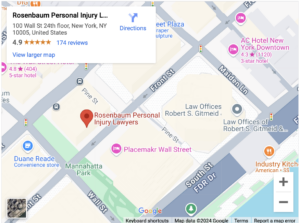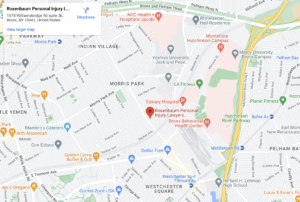Erb’s Palsy a Threat To Newborn Children
Erb’s Palsy, also called Brachial Plexus Palsy, is a birth injury that occurs in about two out of every 1,000 babies, according to the American Academy of Orthopedic Surgeons. Parents should be aware of the symptoms of Erb’s Palsy, the causes of the condition and the treatment options available for Erb’s Palsy.
Symptoms of Erb’s Palsy
The brachial plexus is a collection of nerves coming from the spinal cord between the vertebrae, going down into the arm. These nerves control movement and feeling in the arm and shoulder. An infant suffering from Erb’s Palsy sustains damage to these nerves. The child may not be able to move his or her shoulder and upper arm. The child also may not be able to turn his or her lower arm. The infant’s arm is often rotated into his or her body.
When a child suffers deeper nerve damage and cannot move his or her hand as well, the condition is called global Brachial Plexus Palsy, meaning that the whole plexus of nerves was damaged, not just the top portion as occurs in Erb’s Palsy.
Causes of Erb’s Palsy
Erb’s Palsy results from a doctor stretching an infant’s neck too far during delivery. Stretching can occur when a doctor pulls the infant out of the birth canal head-first if the infant’s head is too far to the side as the doctor pulls on the infant’s shoulders. In the event of a breech birth, where the child comes out feet-first, Erb’s Palsy can occur if the child’s arms receive too much pressure while raised above the head while exiting the birth canal.
Babies that are larger than average and babies born breech are at greater risk for Erb’s Palsy. Babies that are larger than 8 pounds, 13 ounces run the risk of getting one of their shoulders caught in their mothers’ pelvic bones during delivery, a situation known as shoulder dystocia. During the process of extracting the infant from the mother’s pelvis, doctors may end up damaging the brachial plexus.
Treatment options
In some cases, the damage to the brachial plexus is mild, so infants with Erb’s Palsy will recover full use of their arms without medical intervention. Parents may want to have physical therapy done on their children’s affected arms and shoulders to prevent muscle stiffening and contracted joints.
In about 20 percent of cases of Erb’s Palsy the nerves are torn so severely that they cannot heal. Doctors may opt to transplant tendons. Transplant surgery is usually not an option before a child is three to six months old. Because nerves take such a long time to heal, a child may spend up to two years recovering from a transplant. In many cases, the child will still suffer lifelong muscle weakness and limited range of motion.
Children with Erb’s Palsy can suffer a great deal and incur huge medical expenses to treat the condition. It is important for parents to contact an experienced birth injury attorney to help them in recovering for the medical expenses that a child with Erb’s palsy will incur over his or her life.
Contact the New York City Personal Injury Law Firm of Rosenbaum Personal Injury Lawyers for Help Today
If you’ve been injured in an accident in Manhattan, NY, and need legal help, contact our personal injury lawyers at Rosenbaum Personal Injury Lawyers to schedule a free consultation. We also serve in Brooklyn and the Bronx.
Rosenbaum Personal Injury Lawyers – New York City Office
100 Wall St, 24th Floor
New York, NY 10005
(212) 514-5007
Our firm is located near you. We have an office in NYC
Find us with our GeoCoordinates: 40.7051415,-74.0067386
Rosenbaum Personal Injury Lawyers – Bronx Office
1578 Williamsbridge Rd suite 3b
Bronx, NY 10461
(929) 447-2347
Our firm is located near you. We have an office in the Bronx
Find us with our GeoCoordinates: 40.8468944,-73.8483118
Rosenbaum Personal Injury Lawyers – Brooklyn Office
32 Court St #704
Brooklyn, NY 11201
(718) 550-3601
Our firm is located near you. We have an office in Brooklyn
Find us with our GeoCoordinates: 40.692948,-73.991038



